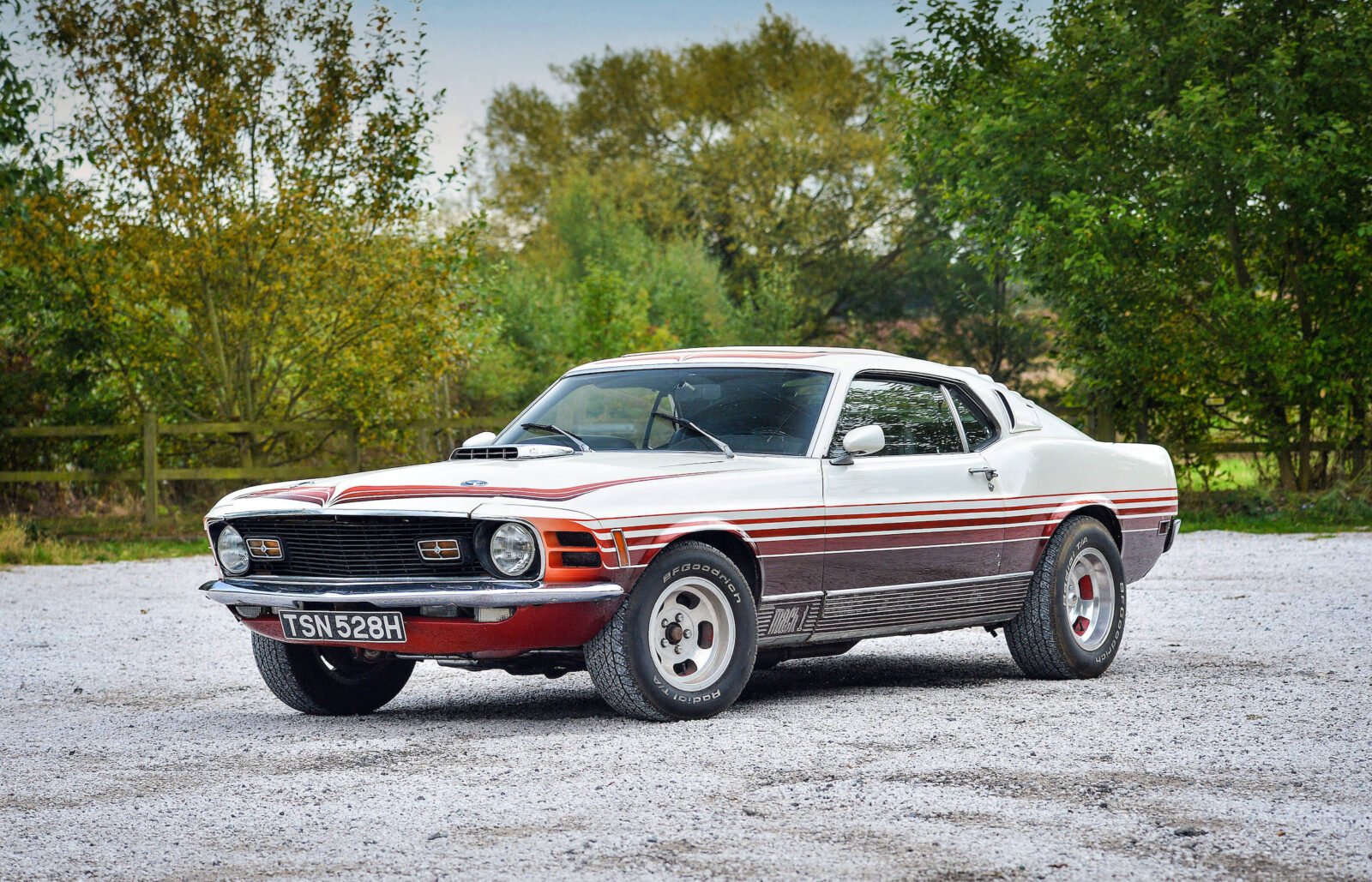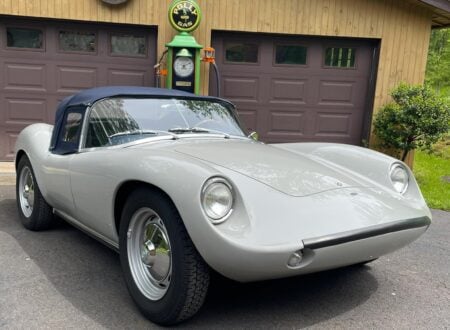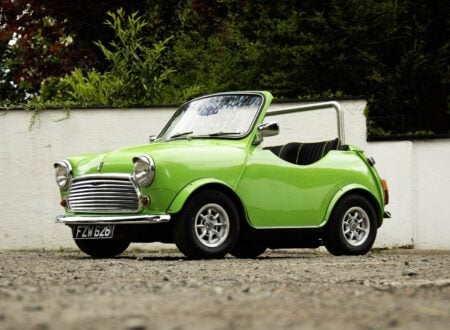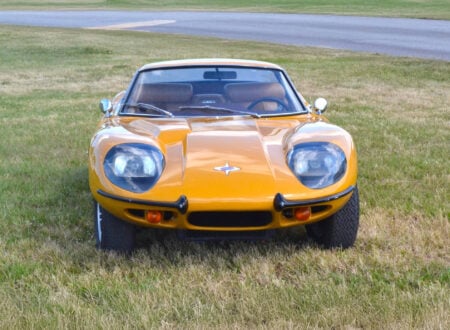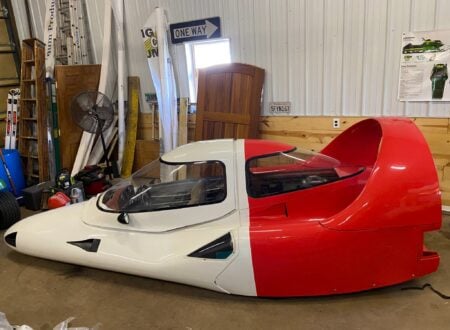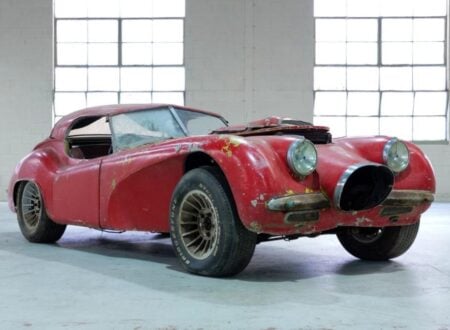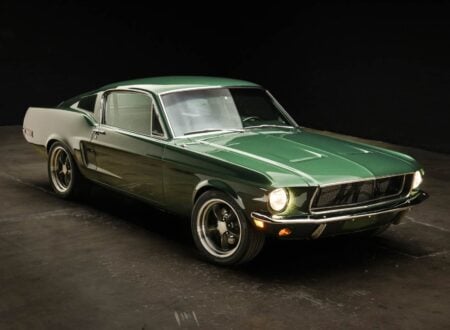The Ford Mustang Mach 1 428 Cobra Jet was released in the 1969 model year as one of the fastest cars to ever carry the Mustang name. The key to the car’s speed was the 428 cubic inch (7.0 liter) Ford Cobra Jet FE V8 engine under the hood, capable of 335 bhp and 440 lb ft of torque.
Ford had been hard at work creating faster and ever more desirable versions of the Mustang to compete with rivals like the Chevrolet Camaro and Pontiac Firebird. The Mustang had created the pony car market segment when it was released in 1964 however the competition had wasted no time catching up.
Fast Facts – The Mach 1 428 Cobra Jet
- With its 335 bhp 7.0 liter V8 the Mach 1 428 Cobra Jet was one of the fastest road-legal Mustangs built by Ford up until that point in history.
- Ford only offered the Mach 1 with the “SportsRoof” fastback body, and additions like the black hood, hood pins, and side decals, so that early examples could be easily distinguished from their non-Mach 1 rivals.
- The Mach 1 proved so popular that Ford actually opted to cancel the Mustang GT, as the Mach 1 was out-selling it almost 15:1.
- The first generation of Mach 1 production ran from 1969 until 1970, these cars are now the most desirable to collectors and they’ve been the key influence of the succeeding generations of Mach 1s.
The Ford Mustang Mach 1
When Ford introduced the Mustang in 1964 they didn’t realize just how much of a success it would be. It was a car that created the entirely new “Pony Car” genre after its running horse (Mustang) logo.
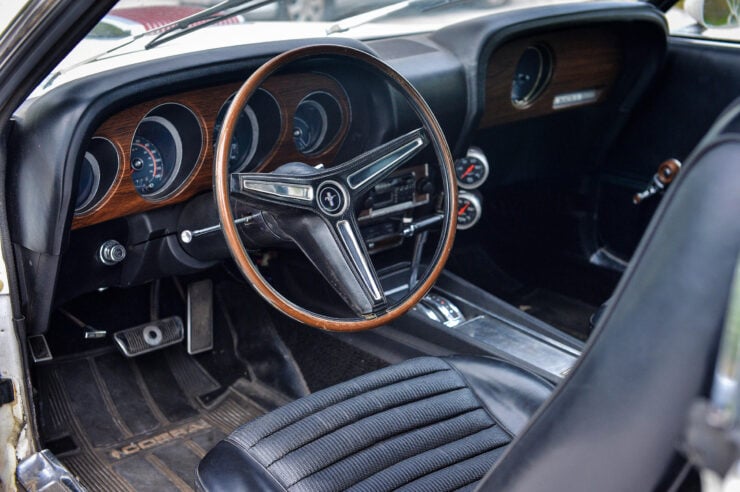

Ford sold hundreds of thousands of Mustangs in the 1960s as the other American automakers all rushed to catch up they realized they didn’t just need to match the Mustang, they needed to beat it. Ford worked with Carroll Shelby on the pricey Shelby GT350 and GT500 versions of the Mustang however these were typically produced in somewhat limited numbers.
By the late 1960s it was clear that the Mustang was falling behind, and drastic action was needed to get the original pony car back to the top of the hill.
1969 would be a critical year for the Mustang, and it would be a year when the car did (arguably) reclaim its place atop the pony car mountain. It would be in ’69 that Ford released the Mustang Mach 1 as well as the Boss 302 and Boss 429, and both the Shelby GT350 and GT500 were updated.
The Mach 1 would be the best seller from this list, likely because it had the most competitive pricing. It sold so well that in its first full year of production Ford sold 72,458 of them.
The Mach 1 could be distinguished from the other Mustangs in production by its adornments, most Mach 1s had a black hood with hood pins, a hood scoop, a Mach 1 side decal, a black rear spoiler and front splitter, and some had louvres over the fastback rear window.
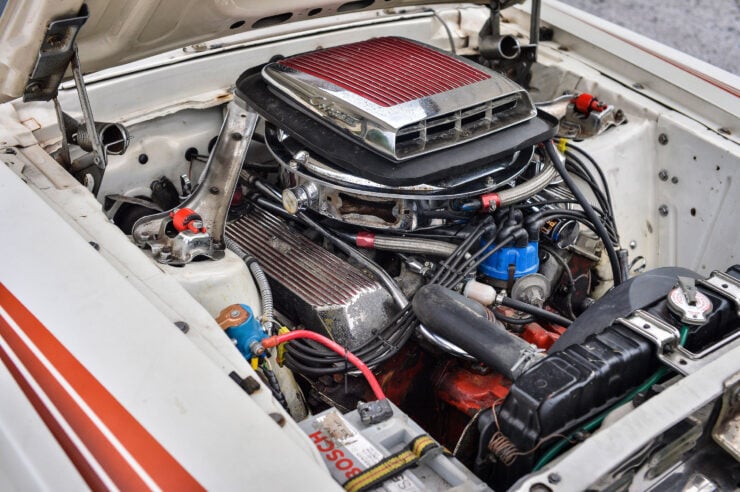

There can be no denying that the Mach 1 looked fast, but Ford wanted to ensure that it actually lived up to its appearance, so it was given a number of engine options including the 351 cubic inch Windsor V8 which came as standard, this could be upgraded to a higher performance version of the 351, or you could opt for a 390 or 428 cubic inch V8.
The most powerful engine on offer was the modified 428 cubic inch Super Cobra Jet V8 offering 335 bhp at 5,200 rpm and 440 lb ft of torque at 3,400 rpm.
All Mach 1s were given upgraded suspension but the big block 428 cars also received reinforced shock towers up front and thicker sway bars to try to compensate for the mass of the V8 under the hood.
In order to drum up publicity for the new Mach 1 Mustangs Ford hired racing drivers Mickey Thompson and Danny Ongais to take three Mach 1s to there Bonneville Salt Flats – the men were tasked with breaking as many speed records as possible.
They succeeded admirably at the undertaking, setting over 260 speed and endurance records over a series of 500 mile and 24 hour courses.
Above Video: Silent footage from the record breaking Mach 1 visit to the Bonneville Salt Flats in 1968 with Mickey Thompson and Danny Ongais taking turns behind the wheel.
The Mach 1 428 Cobra Jet “G Force”
The Mach 1 you see here was nicknamed “G Force” thanks to its unusual paint scheme that was applied under the direction of its owner Barry Sturges.
It originally included a full respray with a Snow Pearl base coat, this was then topped with a coat of Silver Mist Pearl. The stripes were applied in Burnt Orange Candy and then the whole thing was finished off with six coats of lacquer.
The original paint scheme included a quintessentially 1970s-style mural on the bonnet by an American artist called Lee Roy Strange depicting people in a spaceship. It would be this mural that would give the car its “G Force” nickname, a nickname the car still carries even though the mural was painted over long ago when such things became uncool.
Sturges was a keen amateur drag racer, an unusual sport in Britain at the time. He’s said to have managed a mid-14s run in G Force against a similarly 1970s-named car – “Neon Star.”
The car is now due to come up for sale with Historics Auctioneers on the 27th of November in England with a price guide of £39,000 – £45,000 (~$52,800 – $60,900 USD). If you’d like to read more about it or register to bid you can click here to visit the listing.
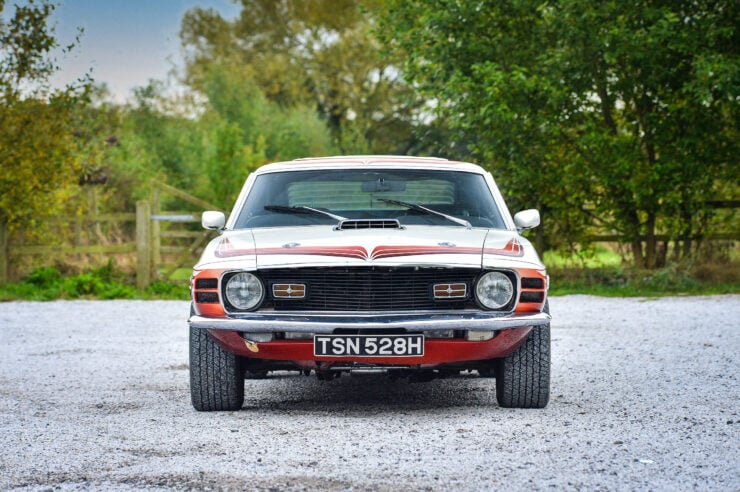
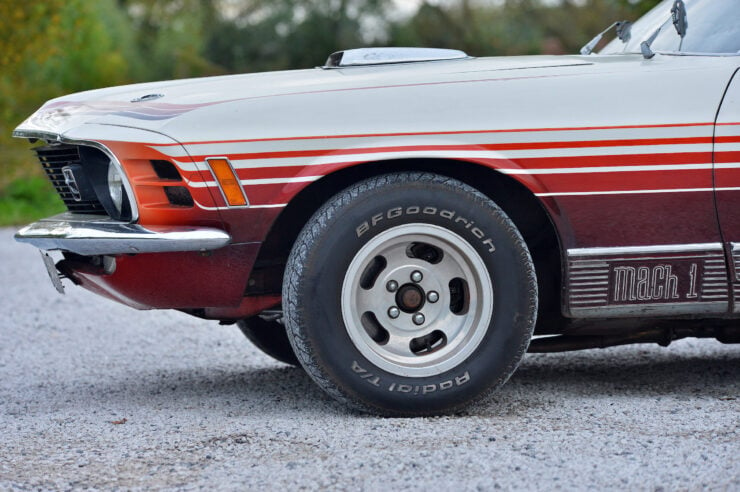
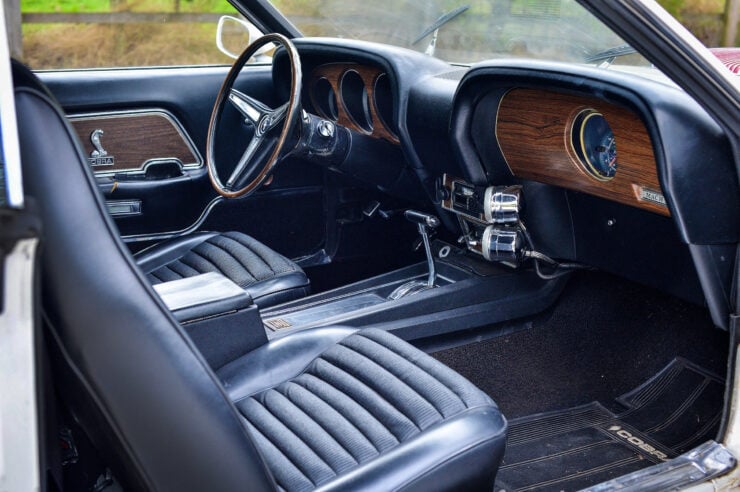
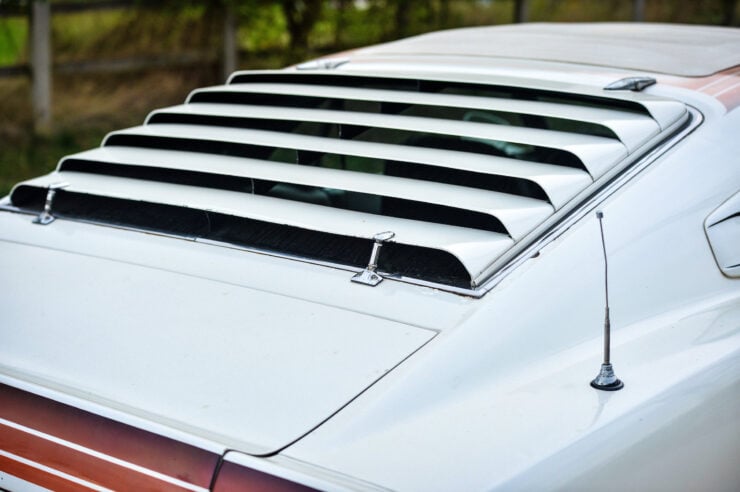
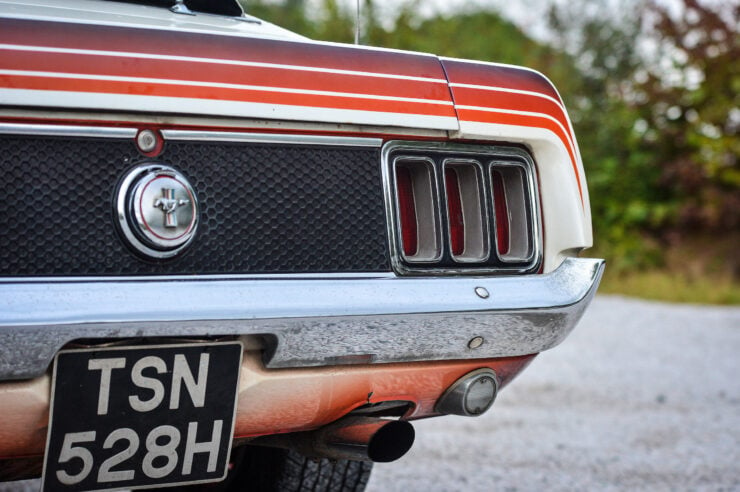
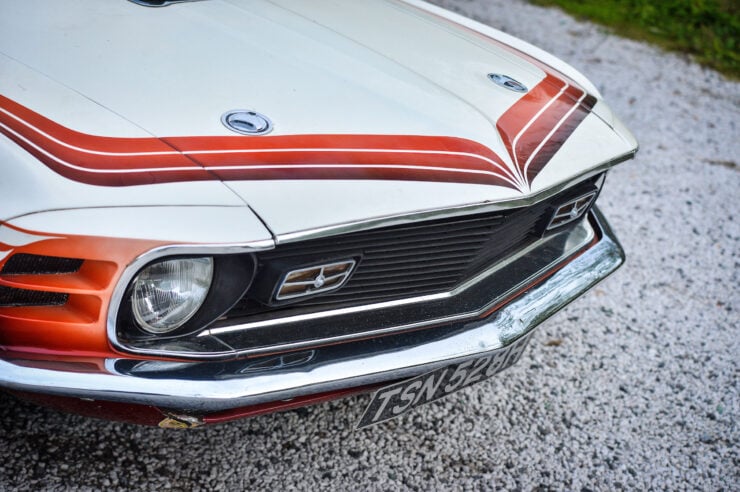
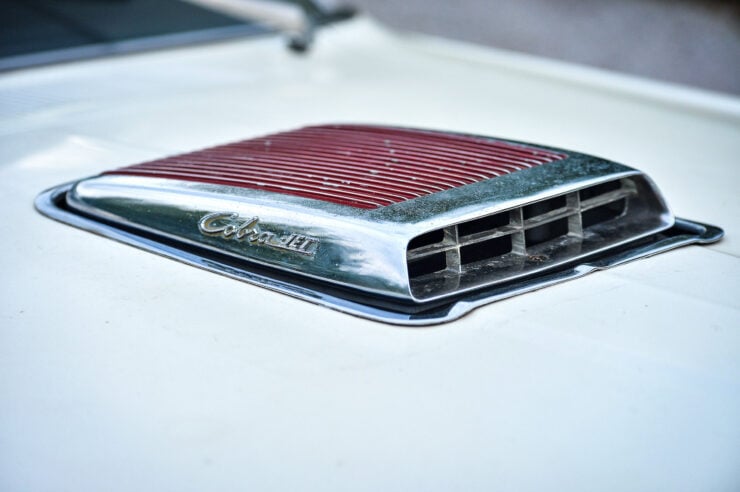
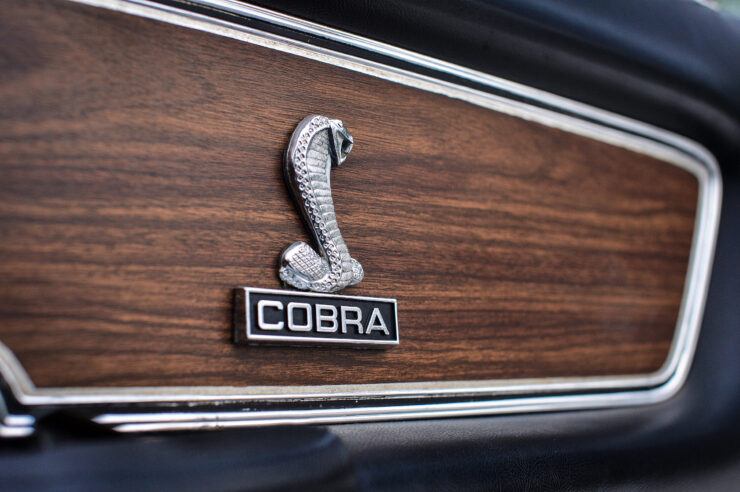
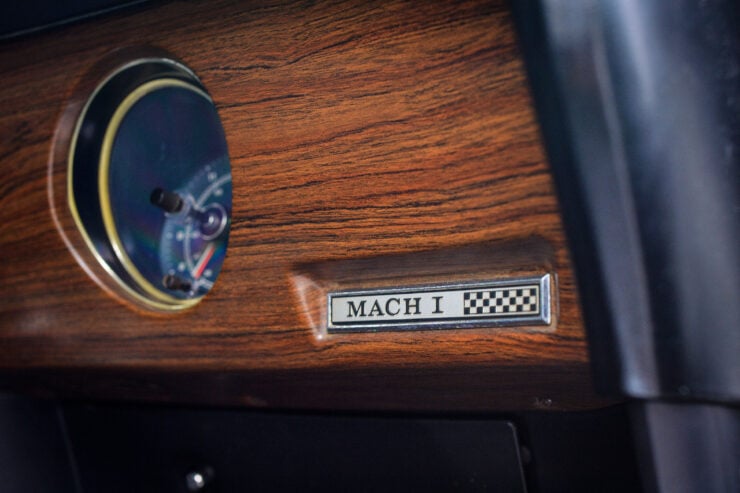
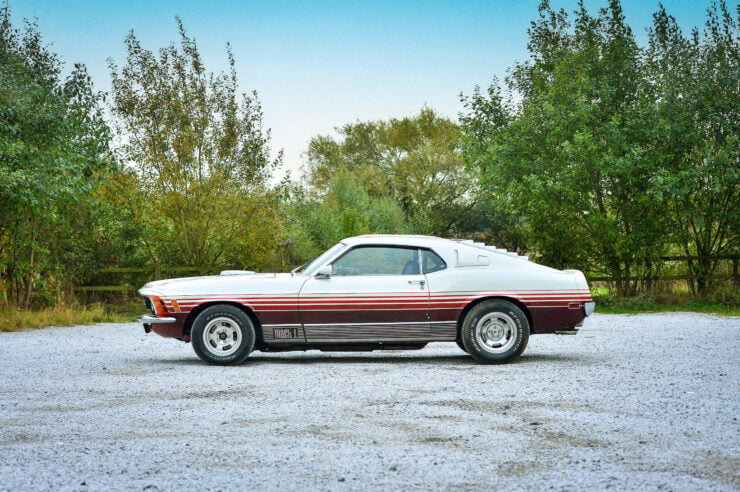
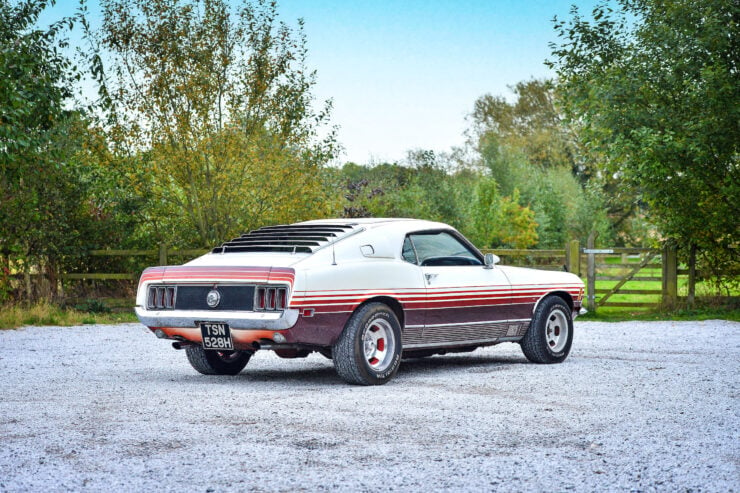
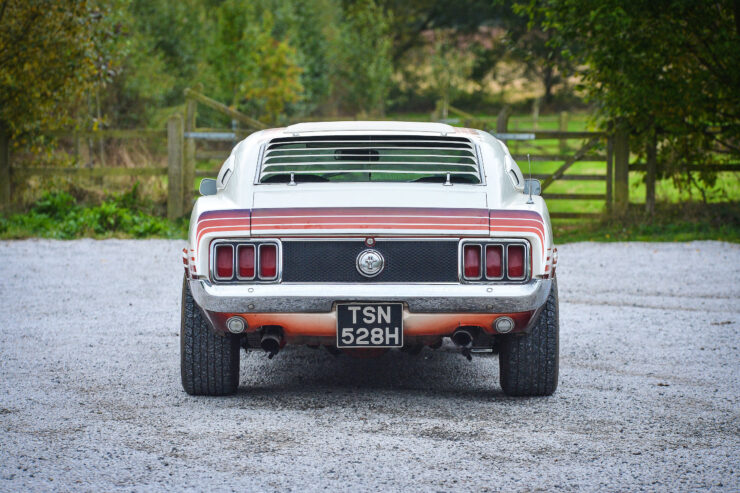
Images courtesy of Historics Auctioneers + Jake Darling

